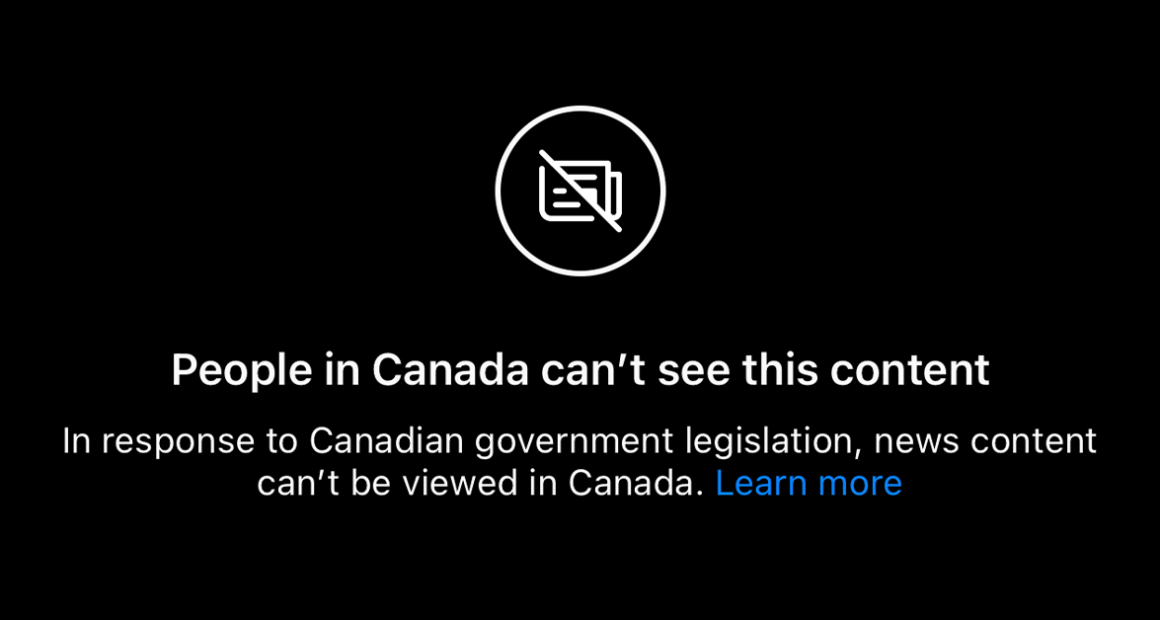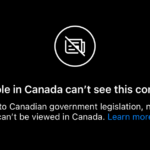In spite of the Meta block, media find ways to reach their audiences

In June 2023, the Canadian government passed Bill C-18, also known as the Online News Act. Modeled after a similar Australian law, it requires digital platforms with 20 million monthly users and an annual revenue of at least $1 billion, to pay media outlets for the content they share on their platforms. So far, big-tech companies such as Google and Meta are the only ones that meet this criteria. The objective was to ensure fair compensation for news companies whose content is shared on social media platforms. In Australia, the law resulted in an estimated $140 million (U.S.) in new funds for media outlets. However, in Canada, Meta and Google took a different approach, which has pushed independent news outlets to find alternate ways to interact with audiences.
Google’s initial response was to threaten to remove links to Canadian news from Google Search, Google News, and Discover products in Canada. Meta started blocking social media users from viewing the Instagram and Facebook pages of news outlets such as the Toronto Star and Maclean’s. For people not following public policy, the message, “People in Canada cannot view this content,” on the Star’s Instagram page was confusing—and not just domestically. “My sister is Canadian-American,” says Jennifer Hollett, executive director of The Walrus. “She keeps trying to send me Instagram reels and infographics, and I have to keep telling her over and over that I can’t see them. For her, it doesn’t make any sense.”
Google Strikes a Deal
On November 29, 2023, almost three weeks before the law went into full effect, Google came to an agreement with the federal government (rather than news outlets), whereby they would pay $100 million annually to news outlets across Canada. This concession amounts to only 58 percent of the federal government’s initial estimate of $172 million for Google to satisfy the exemption criteria of the Act. For comparison, according to News Media Canada, Google’s Canadian revenue was $4.8 billion in 2019, making its annual payment to the federal government a paltry two percent. Critics have also pointed to how this shift from paying outlets to paying the government is more likely to benefit traditional media organizations, while independent organizations will likely receive much less. According to Heritage Minister Pascale St-Onge, almost two-thirds of the annual $100 million that Google must give to news outlets across the country each year will be distributed to print and digital media, with the remaining third being split between CBC/Radio-Canada and other private and public broadcasters.
Hollett says the Online News Act is set up in response to traditional media outlets, specifically newspapers, who have lobbied the government. It’s set up to benefit them, and other big media organizations and legacy papers. Though the Bill intended for these platforms to deal with news outlets, Google’s deal is instead with the federal government.
In 2021, Canadian government officials argued that, unlike the law in Australia, Bill C-18 would give less decision-making power to government officials, and instead, digital companies would have the freedom to strike private deals with media outlets. In Australia, financial deals between news outlets and platform giants included non-disclosure agreements and led to a lack of transparency. This allowed platforms to select who to make deals with, which favoured mainstream Australian news networks like Nine Network and Rupert Murdoch’s news corporation over independent ones. An investigation found these companies (which own 90 percent of Australian newspapers and control a lot of the television market) received AUD$50 million from Google alone.
The Walrus, which has had sponsorships and partnerships with Meta and Google in the past, is a mid-sized independent media organization, so Hollett is concerned that it will be disadvantaged by the bill. “Will we see much money coming from the Online News Act?” Hollett asks. “That’s to be determined. But if you take a look at what happened in Australia, the payments are set up to benefit the bigger, more established media outlets.”
Finding Ways to Adapt
In the meantime, news outlets are finding new ways of engaging with their audience. “It’s our job as storytellers to show up in all places,” Hollett says, “so we’re spending more time on Reddit and LinkedIn, we’re growing our video work on TikTok.”
Arik Ligeti, director of audience at The Narwhal, says the new law and Meta’s subsequent exit from news have underscored the importance of building direct relationships with the outlet’s various audiences. “Soon after Canada passed C-18, we implemented a full-screen pop-up on our site telling readers ‘Good news is hard to find,’ and the only way to keep getting the facts is by signing up for the Narwhal’s newsletter. The result has been a more than 250 percent increase in the sign-up rate, allowing us to grow our email list by 20 percent in four months. What’s more, we’ve seen an immediate trickle-down effect for our revenue, with more than 540 of these new subscribers becoming donors to the Narwhal.”
While the Walrus has lost a notable amount of Facebook readership, which used to be one of its top-five sources of traffic, as well as brand awareness through Instagram, it has been able to grow a larger audience through newsletters, media relations, podcasts, and other means of engagement or storytelling. In 2023, the number of Walrus website users increased nearly 20 percent, overall views and engagements increased by nearly 28 percent, and newsletters now reach over 50,000 people every week.
The bill and its impact, Hollett says, also points to the importance of being transparent to audiences about the fact that the business of journalism is changing. “I don’t think guilting audiences into paying for journalism works. You really have to make the case for the work that you are doing and invite the reader to join—to be a part of your community and to be a part of the work by powering it through a subscription or a membership or a donation.”





